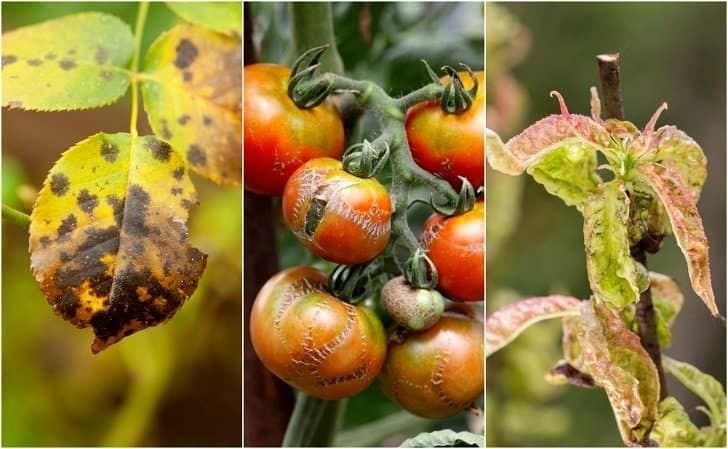Introduction
Agriculture is the backbone of Nigeria’s economy, providing sustenance, employment, and raw materials for various industries. Yet, Nigerian farmers face significant challenges, particularly from pests and diseases that threaten crop yields and quality. Effective pest and disease control is not just about applying chemicals; it’s about understanding the ecosystem, identifying problems early, and implementing integrated solutions. This guide aims to provide Nigerian and African farmers with practical, relatable, and comprehensive information on managing pests and diseases in their crops. Additionally, we will highlight how partnering with experienced agribusiness consulting firms like Agrofiat can help farmers navigate these challenges and achieve success.
Common Pests and Diseases
Maize:

- Pests: Fall Armyworm, Maize Weevil
- Diseases: Maize Streak Virus, Northern Leaf Blight
____________ - Fall Armyworm: Look for irregular holes in leaves and caterpillars on the plants.
- Maize Streak Virus: Notice yellow streaks on leaves, stunted growth.
Rice:

- Pests: Rice Blast, African Rice Gall Midge
- Diseases: Rice Yellow Mottle Virus, Bacterial Leaf Blight
_______ - Rice Blast: Identify diamond-shaped lesions on leaves.
- Bacterial Leaf Blight: Observe yellowing and wilting of leaves from the tip downward.
Cassava:

- Pests: Cassava Mealybug, Green Mite
- Diseases: Cassava Mosaic Disease, Cassava Brown Streak Disease
________ - Cassava Mosaic Disease: Look for yellow mosaic patterns on leaves.
- Cassava Brown Streak Disease: Check for brown streaks on stems and roots, root rot.
Yam:

- Pests: Yam Beetle, Nematodes
- Diseases: Yam Anthracnose, Yam Mosaic Virus
_______ - Yam Beetle: Look for holes and tunnels in tubers.
- Yam Mosaic Virus: Notice mottling and distortion of leaves.
Vegetables (Tomato, Pepper):

- Pests: Tomato Leaf Miner, Aphids
- Diseases: Tomato Blight, Pepper Mosaic Virus
________ - Tomato Leaf Miner: Observe leaf mines and small tunnels within leaves.
- Tomato Blight: Look for dark spots on leaves, stems, and fruits.
Prevention Methods
Cultural Practices:
- Crop Rotation: Rotate crops to break pest and disease cycles.
- Intercropping: Plant different crops together to deter pests.
- Sanitation: Remove and destroy infected plant debris.
Resistant Varieties:
- Use seeds and plants that are bred for resistance to specific pests and diseases.
Good Agricultural Practices:
- Ensure proper spacing to improve air circulation and reduce humidity, which helps prevent diseases.
Control Methods
Chemical Control:
- Pesticides: Use recommended pesticides judiciously. Always follow the label instructions and safety precautions.
- Herbicides: Use herbicides to manage weeds that harbor pests.
Organic Control:
- Neem Oil: Effective against a variety of pests.
- Biological Control: Introduce natural predators like ladybugs and parasitoids to control pest populations.
Integrated Pest Management (IPM):
- Combine cultural, biological, and chemical methods to manage pests and diseases sustainably.
Case Studies and Examples
Maize Farmers in Kaduna: A group of maize farmers in Kaduna successfully managed Fall Armyworm by combining early planting with the use of resistant varieties and periodic neem oil applications. This approach reduced pest damage significantly and increased their yield by 30%. They received guidance from Agrofiat, which provided customized advice and support throughout the growing season.
Rice Farmers in Ebonyi: Rice farmers in Ebonyi faced severe outbreaks of Bacterial Leaf Blight. They started using disease-free seeds, practiced proper spacing, and applied copper-based fungicides. These measures drastically reduced disease incidence and improved rice quality. By consulting with Agrofiat, they were able to implement effective strategies tailored to their specific conditions.
Cassava Growers in Ogun: Cassava growers in Ogun dealing with Cassava Mosaic Disease turned to intercropping cassava with legumes, which helped break the disease cycle. They also sourced resistant cassava varieties, which led to healthier crops and higher productivity. With Agrofiat’s consultancy, they avoided common pitfalls and optimized their farming practices for better results.
Resources and Further Reading
- Local Agricultural Extension Services: Reach out for the latest recommendations and support.
- Research Institutions: Follow updates from institutions like IITA (International Institute of Tropical Agriculture).
- Online Platforms: Websites such as Agrofiat offer valuable insights and expert advice, helping farmers avoid mistakes and achieve greater success.
Conclusion
Managing pests and diseases is a continuous process that requires vigilance, knowledge, and an integrated approach. By staying informed and proactive, Nigerian farmers can protect their crops, increase their yields, and secure their livelihoods. Partnering with a knowledgeable agribusiness consulting firm like Agrofiat can provide the support and expertise needed to navigate these challenges effectively. Remember, every effort in pest and disease control contributes to the overall health and success of your farm. Keep learning, adapting, and sharing your experiences with fellow farmers.

Hey people!!!!!
Good mood and good luck to everyone!!!!!
Pingback: Revolutionizing Maize Farming: Sustainable Practices for Nigerian and African Farmers - agrofiat.com
Hmm
Need your assistance please.
Thanks for the quick response and assistance.
This is really helpful. Thanks
You are welcome
This is really amazing. Well done Agrofiat
Good work
Useful
Great article. Very informative
Dogs Cane Corso in Moscow
cane-corso.moscow